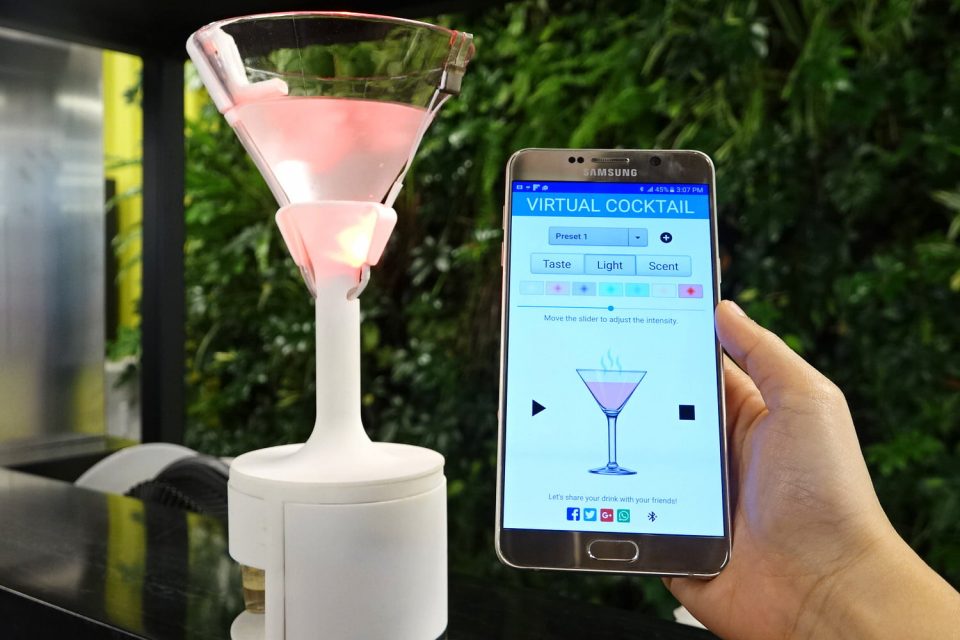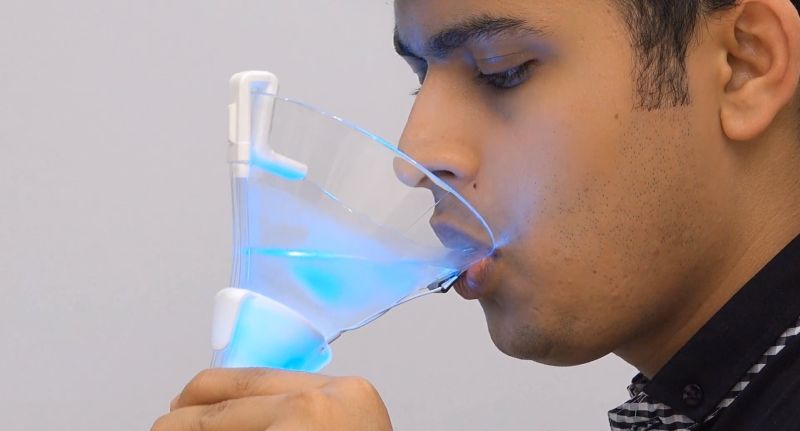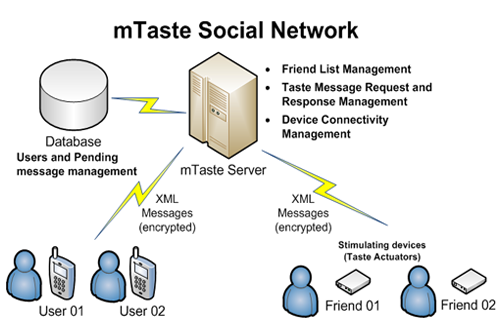If you’re sober, pregnant or otherwise unable or unwilling to consume alcohol, you can still enjoy whatever cocktails you crave with a high-tech drinking glass that simulates three layers of senses to trick you into tasting flavors that aren’t really there. Invented by Nimesha Ranasinghe, the ‘Vocktail’ or ‘virtual cocktail’ glass can either augment the ingredients of your choice to make your real cocktail more complex, or make a glass of plain water taste like expensive scotch.
The first ‘layer’ of sensory simulation is the color cast onto the liquid by LED lights, giving our brains an idea of what to expect from the flavor. The second is tiny pumps of scent located along the rim, spraying these all-important molecules right in front of our noses. But the third, and most impressive, is a series of electrodes that send signals to the tongue, altering the flavor of what we think we’re tasting.
The glass is interesting (and potentially game-changing) in and of itself, but consider how technology like this could dramatically alter our experience of the internet and virtual reality. As part of his research work at the National University of Singapore, Ranasinghe also developed TasteXML, a markup language for flavor, as well as Taste Over IP, a protocol for transmitting flavors over the internet.
The inventor describes the latter creation thusly:
“Taste Over IP (Taste/IP) is a new methodology (framework) for integrating the sensation of taste with the existing digital communication domain. Taste/IP has three core modules: the transmitter, form of communication, and receiver. The transmitter is an AndroidTM mobile application, where the sender formulates a taste message to send. At present, we are conducting research on transferring basic taste sensations known as sour, salty, bitter, and sweet.”
“Then, for communication, we present a new extensible markup language (XML) format, the TasteXML (TXML) to specify the format of taste messages. TasteXML is a Remote Procedure Calling protocol that works over the Internet. TasteXML messages are set of encrypted requests and responses. The body of both request and response are in XML format. As the receiver (actuator), we use the Digital Taste Interface, a novel method for stimulating taste sensations on human.
We believe, in the future, this technology may use to implement digital taste sharing platforms and social networking services.”


